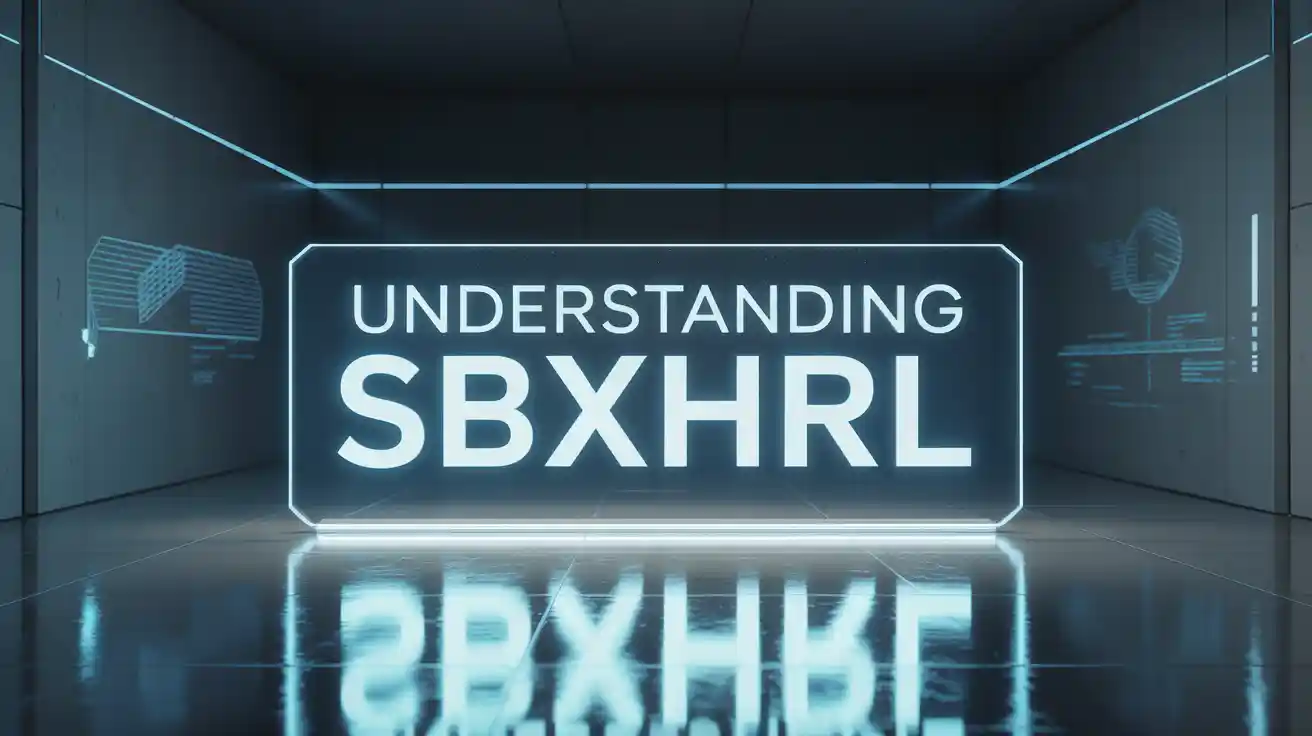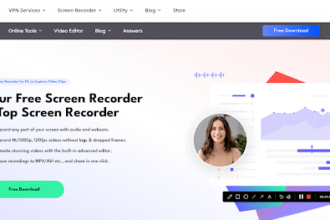1. Introduction
The term SBXHRL (pronounced ‘ess‑bee‑ex‑ash‑arr‑el’) has surfaced across tech blogs, SEO communities, and digital marketing forums. While initially mysterious, it now signals two related but distinct concepts:
- A comprehensive digital growth methodology combining SEO, UX, content, and analytics.
- A synchronous, high‑performance data exchange protocol used in real‑time systems.
This article explores both facets in depth and offers a full guide on how SBXHRL can be leveraged for strategic advantage in digital marketing and system engineering applications.
2. What Is SBXHRL?
2.1 As a Digital Strategy Methodology
Recent coverage describes SBXHRL as an all‑in‑one digital strategy framework that bridges technical SEO, user experience (UX), content optimization, and data analytics with modern automation and AI tools.It is trendy with marketers and business owners as an approach to boost online visibility, streamline user journeys, and improve conversion metrics.
Key Components:
- Keyword research and content creation aligned with user intent
- Website design with fast loading, intuitive navigation (UX)
- Analytics‑driven continuous improvement
- Automation and AI assistance for repetitive tasks
2.2 As a High‑Level Protocol / Communication Framework
Other sources present SBXHRL as an acronym: Synchronous Block eXchange High‑Level Request Language/Layer. In this context, it is a high-throughput, low‑latency protocol for reliable real‑time data exchanges, especially in distributed systems such as finance, logistics, cloud infrastructure, and telecom.
Features include:
- Synchronous block transfer ensuring data integrity
- Error-checking via checksums and acknowledgements
- Designed for scalability and low latency
- Integrated security mechanisms (encryption and authentication)
3. Historical Evolution & Terminology
Originally discussed in 2022, the term began popping up in Medium posts and SEO‑oriented blogs, mostly describing it as an SEO tool that helps drive traffic and monetization. In early 2025, more technical articles re‑defined SBXHRL as a synchronous protocol designed for performance-critical systems.
By mid‑2025, adoption broadened: blogs like In2Egypt clarified SBXHRL as a unified digital strategy system for SEO, UX, content, and automation, while tech‑review platforms discussed its role in modern blogging infrastructure.
Thus, over time SBXHRL has evolved into:
- A dual-use concept straddling both marketing strategy and systems protocol
- A branding term used in digital marketing circles to represent various smart growth frameworks.
4. Core Components & Architecture
4.1 The Digital Strategy Side
SBXHRL combines five core areas:
- Advanced SEO – strategic keyword research, content optimization, link‑building beyond basic SEO.
- User Experience (UX) – ensuring fast performance, intuitive navigation, minimal bounce, mobile‑friendliness.
- Content Optimization – high‑value writing aligned to intent, uniqueness, structured headings and readability.
- Data Analytics – leveraging tools like Google Analytics, heat maps, and feedback data to iterate and refine.
- Automation & AI – using tools for scheduling, keyword tracking, chatbots, predictive insights.
4.2 The Protocol Side
When conceived as a technical framework, SBXHRL’s architecture includes:
- Synchronous block transfer: full data blocks exchanged with confirmation, avoiding partial reads
- Error correction: checksums, redundancy, retransmission options built in
- Scalability and distribution: designed to work across geographically dispersed data centers with minimal latency
- Security integration: endpoints authenticate and exchange data via encrypted channels
5. Key Benefits & Advantages
5.1 Digital Strategy Strengths
- Boosted organic traffic & visibility: higher rankings via combined SEO + content + UX
- Improved conversion rates: UX and content designed to engage and lead visitors toward goals
- Efficient use of resources: data-driven targeting avoids wasted effort
- Scalability and future readiness: applying automation and AI ensures adaptation to new SEO rules
5.2 Systems Protocol Advantages
- Minimal latency & high throughput: suited for fast operations like trading or real‑time control systems
- Robust error resilience: ensures accurate data exchange through confirmation protocols
- Distributed synchronization: keeps multiple systems globally in sync with consistent data states
- Built‑in security: encryption and authentication enforce data confidentiality and integrity
6. Optimization Techniques & Best Practices
For Digital Marketing Implementation
- Audience-first content: align every keyword and page to actual user questions or problems. Integrate long‑tail queries, semantic variants, intent analysis
- UX best practices: fast hosting, intuitive navigation, accessibility, mobile responsiveness. No keyword stuffing—focus on readability.
- Data‑driven iteration: monitor bounce rate, scroll depth, conversion funnels. Use this to refine headlines, CTAs, page layout.
- Automated workflows: content scheduling, AI‑aided copy‑drafting, auto‑responses for new leads. Improves efficiency.
For Protocol/Systems Optimization
- Load balancing: distribute request handling across nodes to avoid bottlenecks
- Compression and chunking: reduce payload size or split data to speed transit over limited bandwidth links
- Caching junctures: reuse frequent data blocks to avoid repetitive transfers
- Parallel processing: allow concurrent handling of blocks in multi‑threaded or multi‑node environments
- Smart routing: choose fastest paths based on latency, bandwidth, using adaptive routing algorithms
7. Use Cases Across Industries
7.1 Digital Marketing / Blogging / E‑Commerce
- Modern blogging platforms integrate SBXHRL methodology to structure posts, embed interactive modules, enhance SEO and personalization
- E‑commerce websites apply its principles for high-search‑ranked product pages combined with compelling UX and analytics tracking
7.2 Finance & Trading
- High‑frequency trading platforms use SBXHRL‑style protocols for real‑time price updates, order matching, and confirmation flows with ultra‑low latency
7.3 Telecommunications & Cloud Infrastructure
- Network components exchange signaling or telemetry using SBXHRL framework to maintain synchronization across servers and edge‑hardware
7.4 Healthcare & Enterprise Systems
- SBXHRL is applied in health data exchanges where secure, accurate transmission of patient records or lab results is critical, using encryption and acknowledgement mechanisms
7.5 E‑Learning, Media & Publishing
- Dynamic blogs and educational platforms embed SBXHRL features to allow personalized reading paths, interactive Q&A blocks, and live feeds integrated into content
8. Implementation Guide: How to Apply SBXHRL
Step‑by‑Step for Digital Strategy
- Audit your existing site: examine content quality, page speed, UX layout, search positioning.
- Define clear KPIs: traffic, dwell time, sign‑ups, leads.
- Establish baseline analytics: install Google Analytics, heatmaps, search console tracking.
- Content plan: write high‑value, optimized posts or product pages aligning with intent.
- Optimize UX: ensure responsive design, clean menus, quick load times.
- Implement automation tools: e.g. AI‑powered content scheduling, auto responses.
- Review & iterate: use performance metrics to adjust and refine strategy.
Step‑by‑Step for Protocol Deployment
- Understand data schema: define block sizes, payload formats, acknowledgement protocols.
- Set up encryption/authentication: TLS or custom crypto systems, identity verification.
- Create error‑checking logic: implement checksum and retransmission fallback.
- Benchmark latency & throughput: test under load, identify bottlenecks.
- Integrate load balancing & routing logic: distribute traffic efficiently.
- Incorporate caching & parallelization: to speed repeat requests.
- Continuously monitor network performance, error rates, throughput. Adjust parameters as needed.
9. Common Misconceptions & Pitfalls
- One‑size‑fits‑all assumption: SBXHRL isn’t a single software tool, but a flexible framework—it must be adapted per context.
- SEO‐only view: Focusing just on keyword optimization without UX or analytics severely limits impact
- Protocol misapplication: Attempting to use SBXHRL logic in systems without encryption or proper error control exposes data risk.
- Ignoring updates: SBXHRL strategies must evolve as search engine or network protocols change—stagnation reduces effectiveness.
10. Future Trends and Emerging Directions
- AI‑powered personalization: future SBXHRL strategy platforms will generate content or UX flows tailored to individual visitor behavior.
- Adaptive protocols: SBXHRL protocol implementations may evolve to support machine‑learning routing and predictive caching.
- As blogging and media continue to seek interactivity, SBXHRL‑style frameworks could power live Q&A modules, dynamic content blending, and user‑generated contributions in real time
- Continued integration of blockchain technologies might enable immutable logging of SBXHRL transfers in enterprise systems.
- SBXHRL methodology itself may solidify into a standardized digital growth blueprint, widely taught in digital marketing trainings.
11. Summary & Final Thoughts
SBXHRL is best understood not as one tool, but as a versatile framework—serving two distinct domains:
- Digital strategy methodology blending SEO, UX, content, analytics, and automation.
- Protocol architecture engineered for synchronous, secure, low-latency data exchanges.
Whether you’re a marketer aiming to elevate a website’s search visibility and lead generation, or a systems engineer building real‑time infrastructure, SBXHRL offers models and techniques to improve both performance and reliability.
By aligning audience-first content, analytics-driven iteration, and automation with robust protocol design and security, SBXHRL stands at the cutting edge of digital transformation in 2025. Its future will depend on continued evolution in AI integration, network routing, and interactive content.
Adopting SBXHRL in your organization requires thoughtful planning—but with proper implementation, it can deliver measurable gains: more traffic, better engagement, faster systems, and stronger security.
Read More About Business At Centomagzine

















